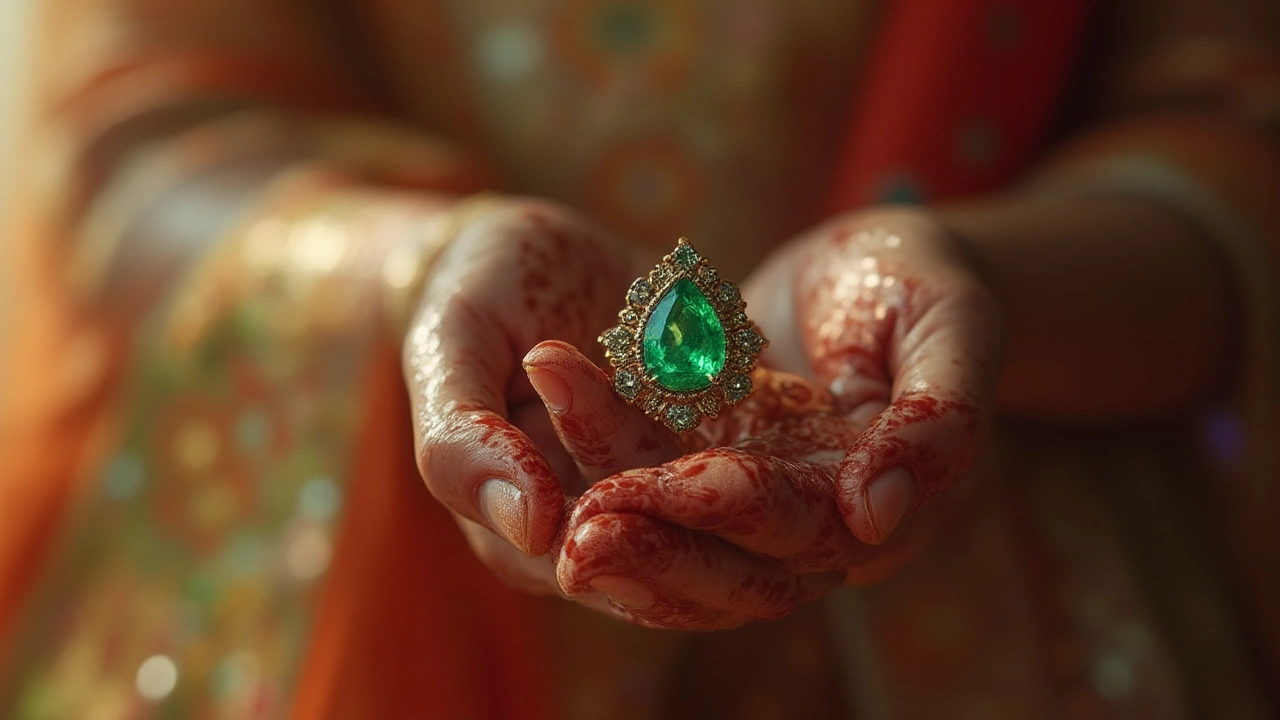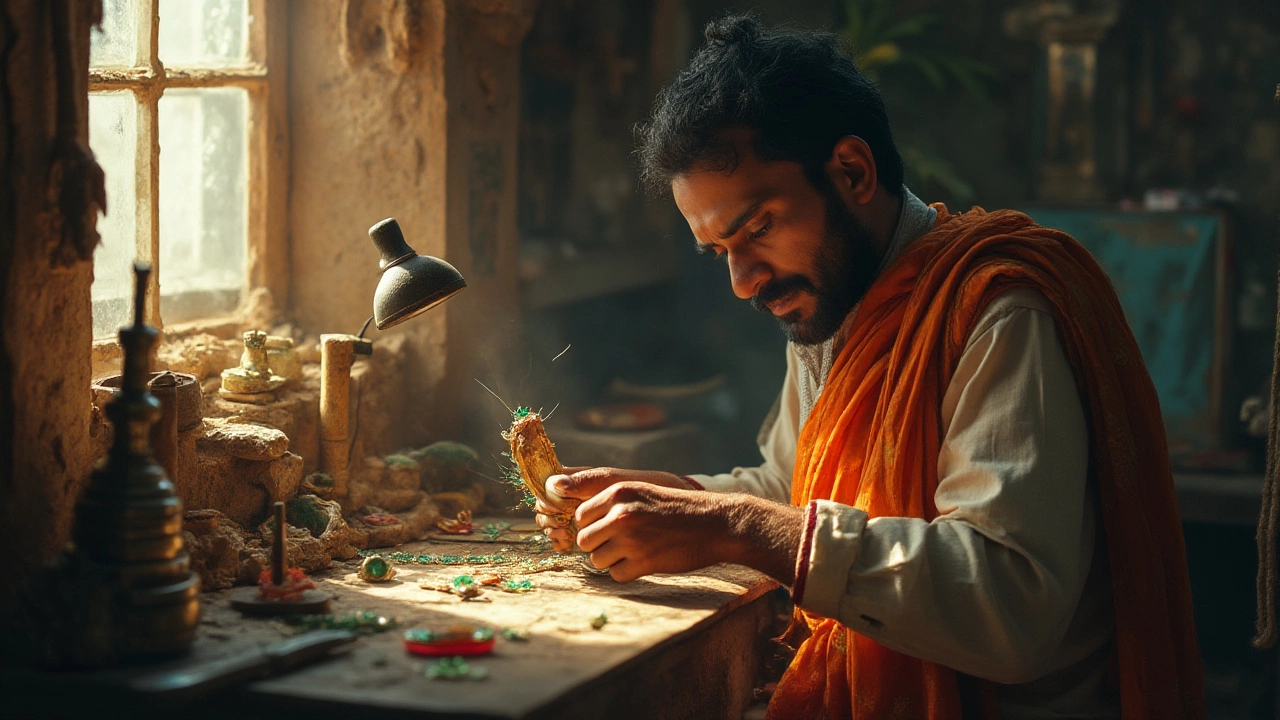
An emerald necklace makes you feel like royalty, right until you wonder if you’re risking the stone’s life with every wear. This brilliant green gem is captivating, but it’s got more rules than your grandma’s dining table. Before you slip on emeralds for your daily errands, let's unpack what’s really at stake. The truth is, emeralds are surprisingly fussy. One hard knock, and your favorite gemstone could chip, crack, or lose its sparkle forever. That’s not a guess. Gemologists have seen too many heartbreaks from daily emerald wear.
Why Emeralds Are Not Built for Everyday Action
To the untrained eye, emeralds might seem as tough as diamonds, but they’re on a different level for durability. The Mohs hardness scale, used worldwide to rate gemstones, puts diamonds at a 10—the undisputed champ. Emeralds come in at about 7.5 to 8, which is decent but not invincible. The real curveball? Most emeralds are full of tiny fissures and inclusions. Gem dealers call this the “jardin” (French for ‘garden’) because the internal lines and features look like little landscapes inside the stone. These inclusions make every emerald unique, but they also act as natural fault lines. Bang your emerald ring against a bench, and those internal cracks might become real, visible breaks.
Many people don’t realise that almost every emerald you find at a jeweler—maybe 95% by expert estimates—has been treated with oil or resin. Jewellers do this to fill in the fractures, making the green colour more intense and hiding internal flaws. The catch? These oils and resins can dry out, wash away with soap, or dissolve when exposed to chemicals like perfume, hand sanitiser, and even some tap waters. When that happens, your gem looks dull or more fissures are exposed, making the stone more fragile and less valuable. Compared to rubies or sapphires, which stand up to much tougher treatment, emeralds need kid-glove care.
Let’s break down daily hazards: If you’re someone who uses their hands a lot—typing, gardening, cooking, or even just reaching into your bag—the risk is real. Emeralds can scratch, chip, or crack easily. Once an emerald is damaged, it’s almost impossible to repair invisibly, and the cost to restore the vibrancy might be more than the stone itself. That’s not scare tactics, just hard-earned wisdom from repair shops across Sydney and anywhere jewelers work with vulnerable stones. If your emerald is set in a ring, that’s the most exposed spot of all. Those prongs look pretty but they can snag, bend, or loosen with daily wear, and you might not notice until the gem’s gone missing.
There’s also the issue of how emeralds react to environmental hazards. Sweat, sunscreen, salt water, chlorine—all of these can eat away at the oils and resins in your emerald. Even sunlight over time can cause the oil to dry out, leaving your stone more exposed. One study from the Gemological Institute of America showed that repeated cleaning or even handling can dull an emerald’s glow much faster than other stones. If you’ve got a habit of showering or swimming with your jewelry on, that’s a big no for emeralds.

How to Keep Your Emeralds Looking Brilliant
The good news? Emeralds don’t have to be locked away for eternity. With some solid care tips and a bit of scheduling, you can keep your favorites in rotation without constant anxiety. Start by making emerald jewelry the star of special occasions—think date nights, birthdays, or events where your hands won’t take a beating. If you work a desk job in an office with minimal risk, emerald studs or a delicate pendant are fairly safe. But if you’re rolling dough, mixing drinks, or biking around Sydney, it’s best to leave them at home.
When you store emeralds, always put them in a soft pouch or a lined jewelry box. Never toss them in a drawer with harder stones like diamonds or even coins, as rubbing and bumping can leave scratches on that precious green surface. If you stack your rings or wear multiple pieces, keep emeralds separate to reduce accidental knocks. A jeweler friend once showed me a ring box filled with “before and after” emerald repairs—a sobering sight of cloudy, cracked, and chipped stones that started out flawless.
Cleaning emeralds is another area where you need to slow down. Skip ultrasonic cleaners and harsh chemicals completely. The safest bet? Warm water, the mildest soap you can find, and a soft, worn toothbrush. Rinse your stone thoroughly and never soak it longer than five minutes. Anything more aggressive can extract the oils and leave your emerald looking tired. Even then, don’t clean it more than once a month. After every cleaning, you’ll want to gently wipe the piece with a soft cloth to wick away moisture.
If you notice your emerald looking cloudy or the green appears waning, a professional jeweler can touch up the oil treatment. But don’t try this at home! Jewelers use highly refined oils and special techniques that the average person can’t replicate. Look for a certified gemologist with experience in emerald restoration—Sydney has a handful of reputable shops, though you might wait a few weeks for a proper treatment.
For pieces you do want to wear more often, consider settings that protect your emeralds. Halo designs, bezels, and even channel settings offer much more security and buffer than dainty prongs. A bezel setting surrounds the stone in metal, shielding the edges and reducing the odds of accidental damage. While nothing is foolproof, a sturdy setting gives you a little breathing room if you occasionally forget to remove your ring before running errands.
| Gemstone | Mohs Hardness | Common Inclusions | Recommended for Daily Wear? |
|---|---|---|---|
| Emerald | 7.5 - 8 | Visible, "jardin"-like | No |
| Diamond | 10 | Minimal | Yes |
| Ruby | 9 | Some | Yes |
| Sapphire | 9 | Few | Yes |
If it all sounds like a lot of responsibility, that’s because emeralds demand attention. Treat them like the beautiful but delicate artwork they are, and they’ll outshine flashier, tougher gems at any event.

Smart Choices and Surprising Alternatives for Daily Green
So, what if you can’t shake that emerald obsession but don’t want to baby your jewelry every second? The jewelry industry’s got you covered with clever solutions. Lab-grown emeralds are just as eye-popping but a bit tougher than their natural counterparts, with less severe internal inclusions. They’re also more affordable, so replacing them in the unlikely event of disaster won’t break the bank.
If you’re after a daily dose of vibrant green, there are alternative gemstones that deliver the emerald look with less fuss. Green tourmaline and tsavorite garnet are two solid stand-ins. Tsavorite, particularly, scores 7 to 7.5 on the Mohs scale but is more resistant to breaking—perfect for rings and bracelets. Peridot is another option that pops in sunny gold or silver settings. These alternatives come with their own care instructions, but you won’t spend every day worrying about invisible cracks multiplying with each bump.
Some emerald fans pick composite jewelry—think emeralds in layered or mosaic designs that are supported by manmade materials. These styles hide internal flaws and shore up the gemstone’s weak points. It’s a modern twist that lets you wear the colour you love with fewer risks. Just check with the jeweler exactly how the piece is reinforced and what steps you can take to maintain those treatments.
There’s also a trend of using emeralds in earrings or pendants, which get less day-to-day wear than rings or bracelets. These spots aren’t as exposed to knocks, so the stones last longer. Jewelry designers have started making more “protective” settings, too—thick gold bands, double-pronged claws, and full metal wraparounds that look as contemporary as they do tough. If you’re buying new emerald pieces, always ask how the stone is set and what the warranty covers.
Feeling sentimental about family heirlooms? Old emeralds can sometimes be reset into safer, more practical jewelry. A battered ring can become an elegant brooch, or a single worn earring can find new life as a delicate pendent. Sydney’s oldest jewelers are experts at upcycling weathered stones, and a refresh can make your vintage emerald wearable for decades more.
Here’s a checklist for anyone who can’t resist daily emerald flair:
- Switch out rings for necklaces or earrings whenever possible.
- Choose settings with plenty of protective metal.
- Take jewelry off before exercising, cleaning, or swimming.
- Keep a soft pouch in your bag, just in case you need to stash your pieces midday.
- Have your emeralds checked and professionally cleaned at least once a year.
- If buying new, ask the jeweler about breakage coverage or care plans.
Wearing emeralds every day isn’t impossible—it just comes with more maintenance than other stones. Think of emeralds like a sports car: show-stopping, unique, but not the best for daily commutes across Sydney’s pothole-riddled roads. If you take precautions, you’ll enjoy that luscious green for years. And when it’s time to leave your gems at home, you might just look forward to the next special moment when you get to show them off again.


